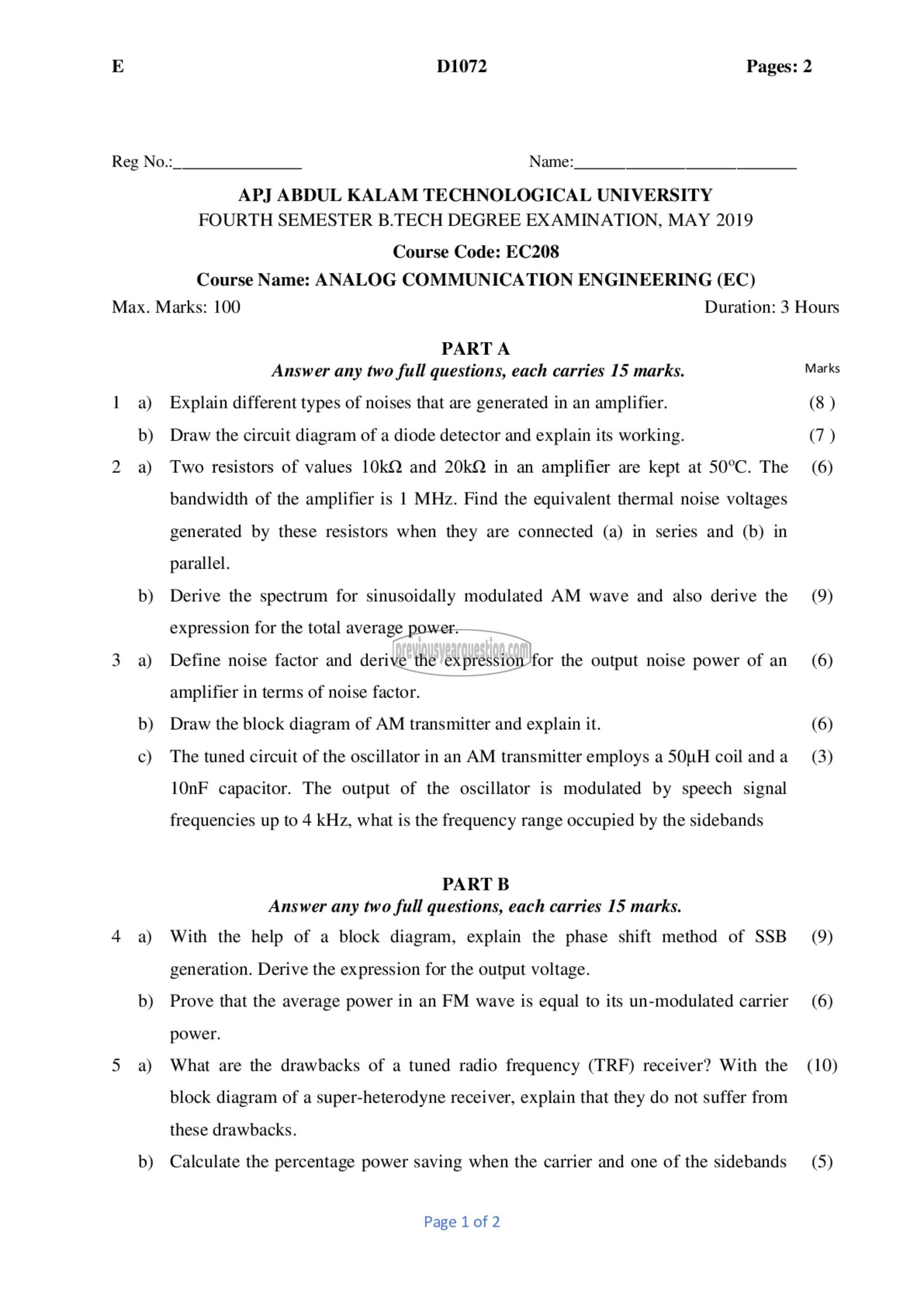APJ ABDUL KALAM TECHNOLOGICAL UNIVERSITY Previous Years Question Paper & Answer
Semester : SEMESTER 4
Subject : Analog Communication Engineering
Year : 2019
Term : MAY
Scheme : 2015 Full Time
Course Code : EC 208
Page:1
Reg No.:_. Name:
Max. Marks: 100
b)
b)
b)
0)
0)
0)
11072 Pages: 2
APJ ABDUL KALAM TECHNOLOGICAL UNIVERSITY
FOURTH SEMESTER B.TECH DEGREE EXAMINATION, MAY 2019
Course Code: EC208
Course Name: ANALOG COMMUNICATION ENGINEERING (EC)
PARTA
Answer any two full questions, each carries 15 marks.
Explain different types of noises that are generated in an amplifier.
Draw the circuit diagram of a diode detector and explain its working.
Two resistors of values 10kQ and 20kQ in an amplifier are kept at 50°C. The
bandwidth of the amplifier is 1 MHz. Find the equivalent thermal noise voltages
generated by these resistors when they are connected (a) in series and (b) in
parallel.
Derive the spectrum for sinusoidally modulated AM wave and also derive the
expression for the total average power.
Define noise factor and derive the expression for the output noise power of an
amplifier in terms of noise factor.
Draw the block diagram of AM transmitter and explain it.
The tuned circuit of the oscillator in an AM transmitter employs a 501/11 coil and a
10nF capacitor. The output of the oscillator is modulated by speech signal
frequencies up to 4 kHz, what is the frequency range occupied by the sidebands
PART 13
Answer any two full questions, each carries 15 marks.
With the help of a block diagram, explain the phase shift method of SSB
generation. Derive the expression for the output voltage.
Prove that the average power in an FM wave is equal to its un-modulated carrier
power.
What are the drawbacks of a tuned radio frequency (TRF) receiver? With the
block diagram of a super-heterodyne receiver, explain that they do not suffer from
these drawbacks.
Calculate the percentage power saving when the carrier and one of the sidebands
Page 1 of 2
Duration: 3 Hours
Marks
(8)
(7)
(6)
(9)
(6)
(6)
(3)
(9)
(6)
(10)
(5)
